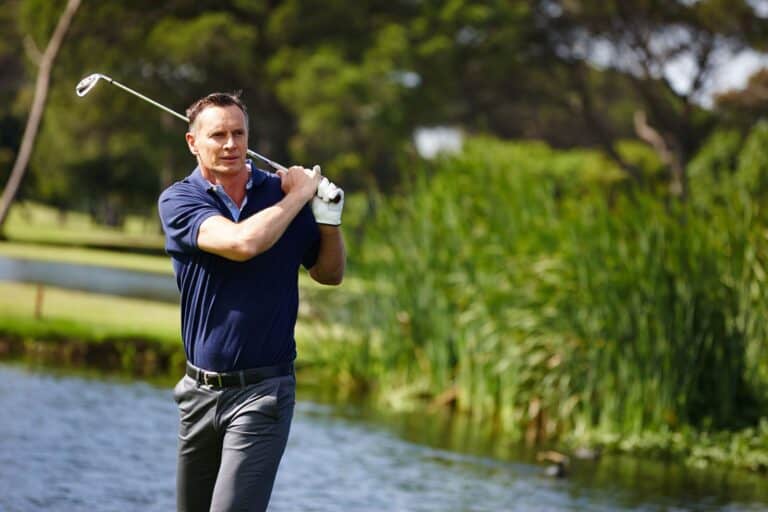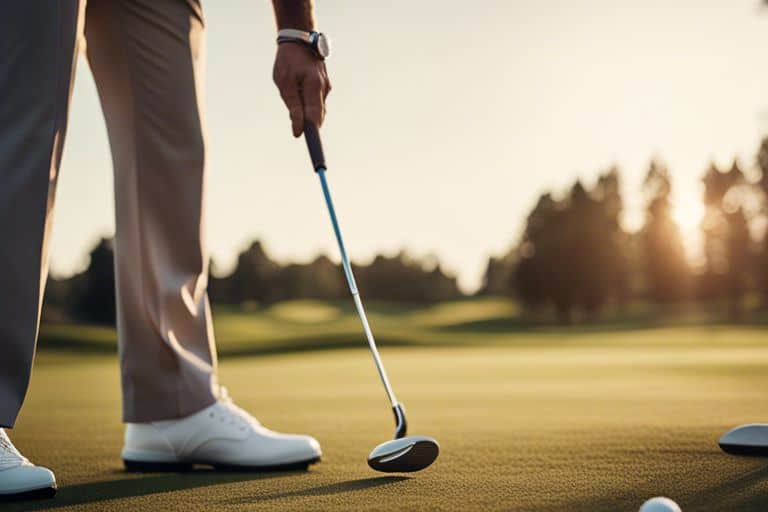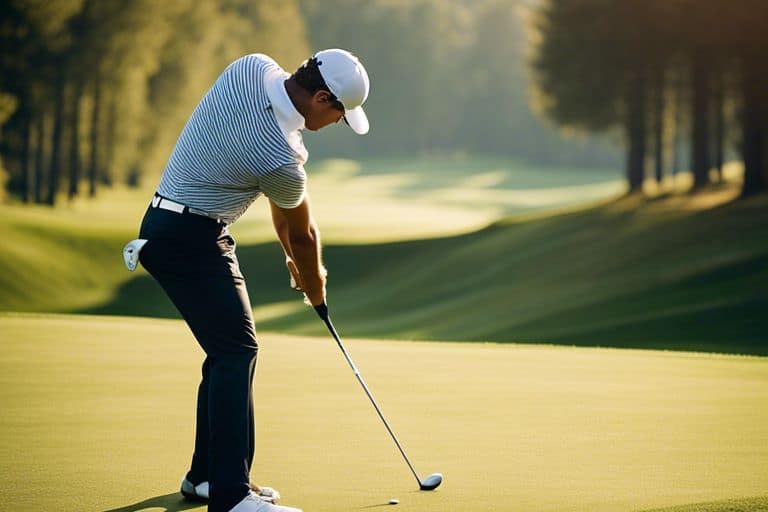How does the angle of attack impact driving accuracy and distance?
Permit me to enlighten you about the crucial role that the angle of attack plays in your golf game. Understanding how the angle of attack affects your driving accuracy and distance can have a significant impact on your performance on the course.
A shallow angle of attack can lead to improved accuracy, while a steep angle of attack can result in greater distance. In this blog post, I will delve into the intricacies of the angle of attack and provide you with valuable insights to optimize your driving game.
Fundamentals of Driving Accuracy
Before we dive into the impact of the angle of attack on driving accuracy and distance, it’s crucial to understand the fundamentals of driving accuracy.
Accuracy in driving is determined by the ability to consistently hit the fairway and avoid hazards. It requires a combination of proper technique, club selection, and understanding the impact of various factors such as angle of attack on the trajectory and distance of the ball.

Relationship Between Angle of Attack and Ball Trajectory
The angle of attack refers to the angle at which the clubhead approaches the ball at impact. It plays a significant role in determining the trajectory and distance of the shot. A steep angle of attack tends to produce a lower ball flight, while a shallower angle of attack results in a higher ball flight.
Understanding the relationship between angle of attack and ball trajectory is crucial for optimizing driving accuracy. When the angle of attack is too steep, it can lead to a lower launch angle and increased spin, causing the ball to drop quickly and potentially veer off course. On the other hand, a shallow angle of attack can result in a higher launch angle, minimizing spin, and allowing for a more controlled, accurate drive.
Equipment Considerations for Optimizing Accuracy
In addition to technique, equipment plays a vital role in optimizing driving accuracy. The choice of driver and shaft can significantly impact the angle of attack and ultimately, the accuracy of your shots.
A driver with a higher loft can help those with a steeper angle of attack to achieve a higher launch angle, while a lower loft may be more suitable for those with a shallower angle of attack. The shaft flex also affects the angle of attack, with a more flexible shaft allowing for a higher launch angle and potentially improved accuracy. It’s essential to consider these equipment factors when aiming to optimize driving accuracy.
Maximizing Driving Distance
Clearly, one of the key goals for any golfer is to maximize driving distance. A longer drive sets you up for shorter approach shots and can give you a significant advantage on the course. There are several factors that come into play when it comes to maximizing driving distance, including the angle of attack.
Effects of Angle of Attack on Ball Speed
The angle of attack refers to the angle at which the clubhead is moving into the ball at impact. This angle has a direct impact on the speed and trajectory of the ball. A positive angle of attack, where the clubhead is moving upward at impact, can lead to higher launch angles and increased ball speed.
On the other hand, a negative angle of attack, where the clubhead is moving downward at impact, can result in lower launch angles and decreased ball speed. Finding the optimal angle of attack for your swing can have a significant impact on your driving distance.
Achieving the Optimal Balance between Distance and Control
While maximizing driving distance is important, it’s also crucial to achieve a balance between distance and control. A positive angle of attack can lead to longer drives, but it can also make it more challenging to control the trajectory of the ball.
Conversely, a negative angle of attack can provide more control, but at the expense of distance. Finding the optimal balance between these factors is key to achieving your best performance off the tee.

Techniques for Adjusting Angle of Attack
Lastly, let’s talk about some techniques you can use to adjust your angle of attack and improve your driving accuracy and distance. Making the necessary adjustments to your swing can make a world of difference in how the ball travels off the tee.
Swing Adjustments for Desired Angle of Attack
One way to adjust your angle of attack is by making changes to your swing. If you want to increase your angle of attack and hit the ball on the upswing, you can try placing the ball slightly forward in your stance and teeing it up a bit higher. Additionally, focusing on a smooth, sweeping motion through impact rather than hitting down on the ball can help you achieve a more positive angle of attack.
On the other hand, if you are looking to decrease your angle of attack and hit the ball on a more shallow angle, you can try teeing the ball lower and positioning it slightly back in your stance. Deliberately hitting down on the ball at impact can also help to achieve a more negative angle of attack.
Practice Drills to Enhance Muscle Memory
Practicing specific drills can help enhance your muscle memory and improve your overall angle of attack. One drill I recommend is setting up an alignment stick on the ground to represent the ideal angle of attack you are aiming for.
By practicing hitting shots over the stick and consistently making contact with the ball at the correct angle, you can train your body to replicate the desired motion. Another drill involves using impact tape on your clubface to track the position of your strike. This visual feedback can help you make real-time adjustments to your swing to achieve the optimal angle of attack for maximizing your driving distance and accuracy.

Analyzing Angle of Attack
Now, let’s take a closer look at the angle of attack and how it impacts driving accuracy and distance. The angle of attack refers to the angle at which the clubhead approaches the ball at impact. It plays a crucial role in determining the trajectory, spin, and speed of the ball.
Tools and Technologies for Measuring Angle of Attack
Measuring angle of attack requires specialized tools and technologies. Launch monitors, such as Trackman and Foresight, are often used to accurately measure the angle of attack. These devices provide valuable data on clubhead speed, ball speed, launch angle, and spin rate, allowing you to precisely analyze your angle of attack.
Case Studies: How Pros Leverage Angle of Attack
Several professional golfers have effectively leveraged their angle of attack to enhance their driving performance. One notable case is Rory McIlroy, whose aggressive angle of attack contributes to his exceptional driving distance. Another example is Brooks Koepka, whose shallow angle of attack allows him to generate both distance and accuracy off the tee. These case studies highlight the importance of understanding and optimizing your angle of attack to maximize your driving potential.
- Rory McIlroy – With an average angle of attack of +1.5 degrees, McIlroy consistently ranks among the top in driving distance on the PGA Tour.
- Brooks Koepka – Koepka’s angle of attack hovers around -1.5 degrees, allowing him to hit powerful drives with remarkable accuracy.
Conclusion
From above, the angle of attack plays a crucial role in both driving accuracy and distance. By understanding how the angle of attack affects your ability to make solid contact with the ball, you can adjust your approach to achieve optimal results.
Whether you are looking to improve your accuracy or increase your distance off the tee, paying attention to your angle of attack can make a significant difference in your overall driving performance.






